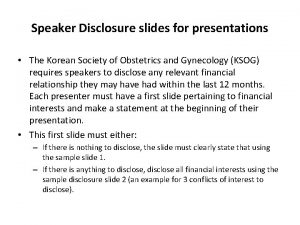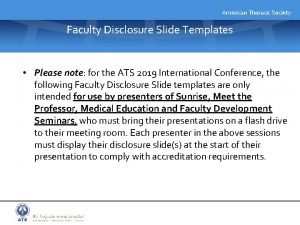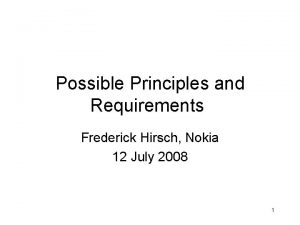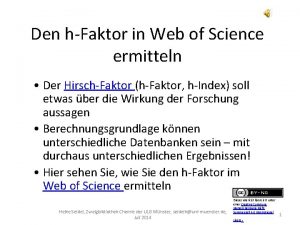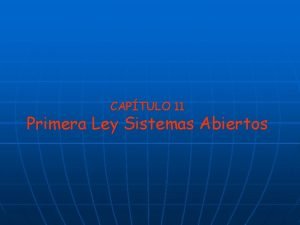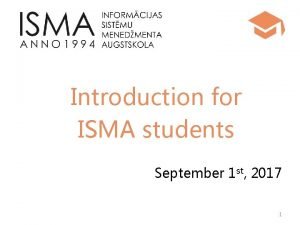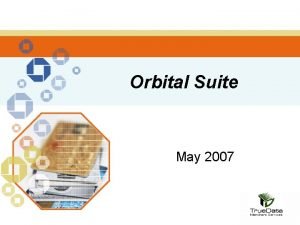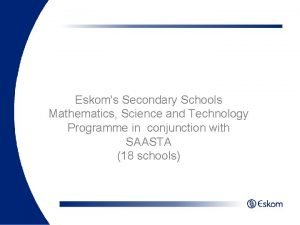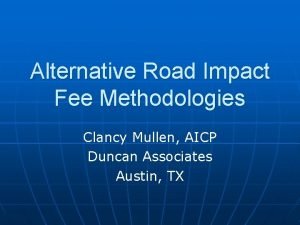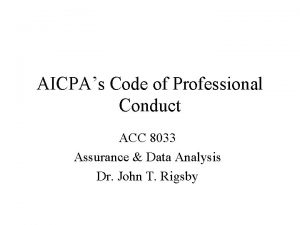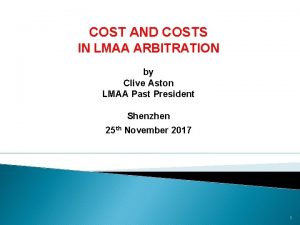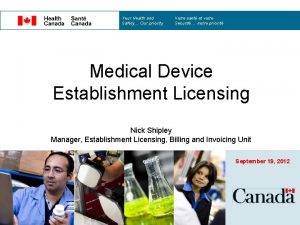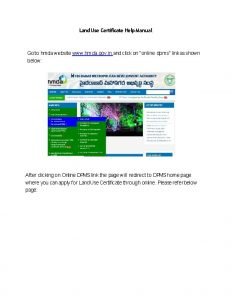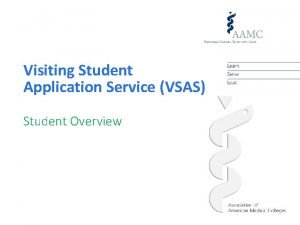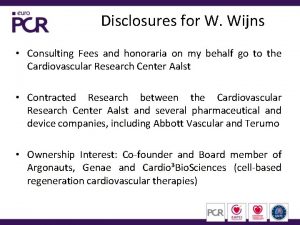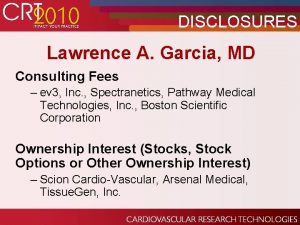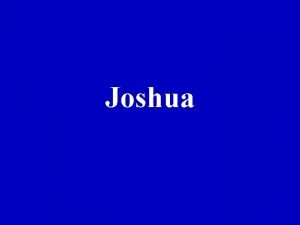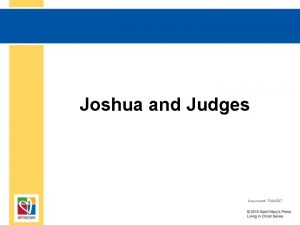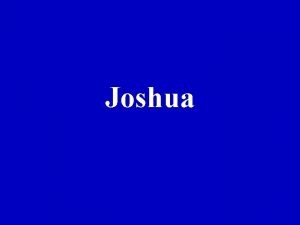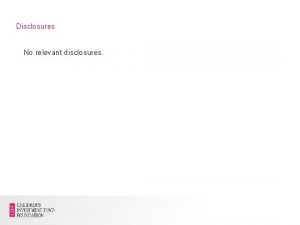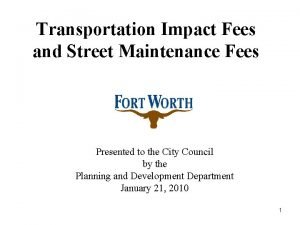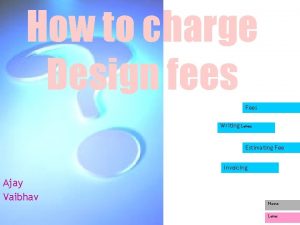DISCLOSURES Joshua A Hirsch MD Consulting Fees Intratech

















































- Slides: 49

DISCLOSURES Joshua A. Hirsch, MD Consulting Fees – Intratech Medical LTD. , Medtronic Cardio. Vascular, Inc.

Acute Stroke Intervention: Part 3 Imaging (basic-->advanced for triage) Joshua A. Hirsch, MD FSIR Albert Yoo MD Vice Chief Interventional Care Director : Interventional Neuroradiology/Endovascular Neurosurgery Chief: Minimally Invasive Spine Surgery Massachusetts General Hospital Associate Prof: Harvard Medical School MASSACHUSETTS GENERAL HOSPITAL

Disclosures: stroke Consultant and shareholder: Intratech Steering Committee: MERCI Registry--all honoraria donated to charity (NERF) Co-investigator on all IA stroke studies MGH is participating in. Some slides provided by industry Discussion will include off label use of product MASSACHUSETTS GENERAL HOSPITAL

Stroke Physiology · · · After acute proximal artery occlusion, there is a characteristic progression of neuronal death Currently, time = surrogate for the extent of brain injury Imaging seeks to individualize treatment decisions MASSACHUSETTS GENERAL HOSPITAL

Time is Brain? ? ? 8 HOURS POST-ICTUS 79 year old female with right hemiparesis and seizure: ICA-T occlusion MASSACHUSETTS GENERAL HOSPITAL

Time is Brain? ? ? 2. 5 HOURS POST-ICTUS 74 year old male with right hemiparesis and aphasia: ICA-T occlusion MASSACHUSETTS GENERAL HOSPITAL

MASSACHUSETTS GENERAL HOSPITAL Courtesy of Reza Hakimelahi, MD

Rate of neuronal loss Distance = Rate x Time Infarct burden = Rate of neuronal loss x Time MASSACHUSETTS GENERAL HOSPITAL

Collateral circulation Koroshetz / Gonzalez In : Acute Ischemic Stroke Imaging and Intervention 2006 MASSACHUSETTS GENERAL HOSPITAL Christoforidis AJNR 26: 1789– 1797, August 2005

Key imaging questions · · Is there a hemorrhage? NCCT ≥ MRI Is there a vessel occlusion? CTA > MRA How much is dead? DWI > NCCT (? CTA SI, ? CTP) How much is at risk? Perfusion imaging? ? MASSACHUSETTS GENERAL HOSPITAL

Basic Imaging Physics · · · CT has one intrinsic contrast mechanism = differences in electron density MRI can image many different physical properties of protons: density, T 1 & T 2 relaxation times, diffusivity For both CT and MRI, contrast can be given to assess perfusion characteristics in the ischemic bed MASSACHUSETTS GENERAL HOSPITAL

Range of Human Tissue in HU HU scale bone 900 50 water 0 -50 air MASSACHUSETTS GENERAL HOSPITAL -1000 Courtesy of Rajiv Gupta, M. D. window Bone ≥ 900 Blood 60 -100 Muscle = 50 Gray Matter = 40 level White Matter = 30 Water =0 Fat = -80 Lung = -300

What does CT measure? HU scale bone · 900 50 water 0 -50 · window · level · Differences in attenuation secondary to tissue and electron density Higher the density brighter the object Measured in HU and relative to H 2 O Brain: · · air MASSACHUSETTS GENERAL HOSPITAL -1000 Gray matter: 30 -40 HU White matter: 20 -30 HU

Noncontrast head CT scan Gray matter: Basal ganglia, Cortex White matter MASSACHUSETTS GENERAL HOSPITAL

· Is there a hemorrhage? MASSACHUSETTS GENERAL HOSPITAL

Assessment of intracranial hemorrhage HU scale · bone 900 · 50 water 0 -50 air MASSACHUSETTS GENERAL HOSPITAL -1000 window · level · Higher the density brighter the object Acute extravascular blood is brighter than brain Blood: 60 -100 HU Brain: · · Gray matter: 30 -40 HU White matter: 20 -30 HU

Traditional Imaging of Acute Stroke: Non-Contrast CT Exclude intracranial hemorrhage: Hemorrhagic (non-ischemic) stroke Subarachnoid Bleed (aneurysmal rupture) MASSACHUSETTS GENERAL HOSPITAL Courtesy of Stuart Pomerantz, M. D. Parenchymal Hematoma (e. g. hypertensive bleed)

Hemorrhagic conversion of ischemic stroke · · Important complication of AIS and treatment Occurs in the ischemic bed MASSACHUSETTS GENERAL HOSPITAL

· Is there a vessel occlusion? MASSACHUSETTS GENERAL HOSPITAL

CT Angiography · Important tool for rapidly and accurately assessing location of vessel occlusion · · · Is there a lesion amenable to interventional stroke therapy? Prognostic implications: ICA-T vs. M 1 vs. M 2 May provide added value to the evaluation of the brain parenchyma · More sensitive assessment of the brain parenchyma MASSACHUSETTS GENERAL HOSPITAL

Neuro-CTA is our study of choice for all Emergent Neurovascular Indications · Intracranial Vasculature · · · Acute ischemic stroke Intracranial stenosis Aneurysms AVMs Venous Thrombosis Courtesy of Stuart MASSACHUSETTS GENERAL HOSPITAL Pomerantz, M. D.

Neuro-CTA is our study of choice for all Emergent Neurovascular Indications · Extracranial Vasculature · · · Carotid artery stenosis/occlusion Carotid/Vertebral dissection Trauma MASSACHUSETTS GENERAL HOSPITAL Courtesy of Stuart Pomerantz, M. D.

Neuro-CTA: Why? · · · · Accurate Fast Widespread availability of scanners Not prone to artifactual signal dropout like MRI Non-invasive High-resolution Preservation of bone detail MASSACHUSETTS GENERAL HOSPITAL Courtesy of Stuart Pomerantz, M. D.

· CTA is highly accurate · · · Sensitivity 98. 4%, Specificity 98. 1% vs DSA · (Lev MH et al, JCAT 2001) High inter-observer reliability MRA (3 D TOF) performs reasonably well · · · Sensitivity 84 -87%, Specificity 8598% vs DSA Moderate inter-observer reliability Less accurate for more distal occlusions MASSACHUSETTS GENERAL HOSPITAL

· How much tissue is dead? And how much is at risk? MASSACHUSETTS GENERAL HOSPITAL

The Ischemic Penumbra MASSACHUSETTS GENERAL HOSPITAL Courtesy of Dr. Gil González

PWI/DWI Mismatch the imaging surrogate of the penumbra · · Infarct Core = DWI hyperintense lesion Penumbra = hypoperfused tissue not in the core (e. g. , MTT or TTP prolongation) MASSACHUSETTS GENERAL HOSPITAL

Selection for IAT · · PWI/DWI mismatch is not discriminatory in the setting of large vessel occlusion – volume of MCA territory is ~300 cm 3 In our opinion, the more important question: How much is dead on arrival? · This is best assessed on DWI lesion MASSACHUSETTS GENERAL HOSPITAL

Importance of Infarct Volume · Final infarct volume is the best predictor of clinical outcome. MASSACHUSETTS GENERAL HOSPITAL

Stroke 2003; 34: 2426 -35 MASSACHUSETTS GENERAL HOSPITAL

Selection for IAT · · · PWI/DWI mismatch is not discriminatory in the setting of large vessel occlusion – volume of MCA territory is 300 cm 3 The more important question: What is dead on arrival? DWI lesion An acute infarct volume threshold of 70 cm 3 has a high specificity for predicting a poor outcome (Sanak et al. 2006) MASSACHUSETTS GENERAL HOSPITAL

Acute Infarct Volume Threshold MASSACHUSETTS GENERAL HOSPITAL

Various measures of the core infarct · · MRI DWI (best estimate) NCCT CTA source images CT perfusion MASSACHUSETTS GENERAL HOSPITAL

MRI DWI · · Considered the gold standard for depicting the infarct core Identifies restricted diffusivity of water, which is thought to be related to energy failure cytotoxic edema Highly sensitive (91 -100%) and specific (86 -100%) within the first 6 hrs of stroke onset Similar accuracy to 11 C flumazenil PET, a reliable marker of neuronal integrity MASSACHUSETTS GENERAL HOSPITAL

Interpreting DWI �e-1/T 2 * e-ADC · · Therefore, may get false positives from “T 2 shine-through” Must interpret with the ADC map MASSACHUSETTS GENERAL HOSPITAL

NCCT detection of acute infarction · · · 0 -3 hrs: cytotoxic edema – not much change in overall tissue water content > 3 -6 hrs: vasogenic edema Δ HU �(degree of edema) · For every 1% ↑ in tissue H 2 O, X-ray attenuation ↓ by 3 -5% (or ~2. 5 HU) MASSACHUSETTS GENERAL HOSPITAL

NCCT signs of acute ischemia · Basal Insular Cortex ganglia ribbon Loss of gray-white matter differentiation: · · · MASSACHUSETTS GENERAL HOSPITAL “Insular ribbon” Basal ganglia Cortex

· Using narrow window and level settings (8 HU W, 32 HU L) can accentuate the small differences in attenuation due to ischemia · · Sensitivity increases from 57% to 71% Specificity 100% Radiology 1999; 213: 150 -155 MASSACHUSETTS GENERAL HOSPITAL

Improved NCCT detection MASSACHUSETTS GENERAL HOSPITAL Standard Optimal

CT I-: Non-thrombolysis candidate 3 hours Courtesy of Stuart Pomerantz, M. D. MASSACHUSETTS GENERAL HOSPITAL 24 hours 2 weeks

NCCT has poor sensitivity · · CT is much less sensitive than MRI for detection of acute infarction (75% sensitivity 1) Has comparable specificity (>90%) 1 Barber PA, et al. Stroke. 1999; 30: 2059 -65. MG, et al. Neurology. 2000; 54: 1557 -61. 2 Lansberg MASSACHUSETTS GENERAL HOSPITAL

NCCT vs DWI Δ 15 min. MASSACHUSETTS GENERAL HOSPITAL

CTA source images · · Parenchymal evaluation performed on CT angiography Hypodensity is related to decreased tissue constrast Under steady state conditions, the hypodense lesion approximates the CBV (Hamberg et al, AJNR 1996) Images viewed on narrow windows (W: 30 HU, L: 30 HU) MASSACHUSETTS GENERAL HOSPITAL

CTA source images MGH 85 yo F with DM, HTN presents with left hemiparesis, NIHSS 16 at 1 h: 26 min after onset IV t. PA. MASSACHUSETTS GENERAL HOSPITAL

CTA-SI ≈ DWI · Schramm et al. (Stroke 2002; 33: 2426 -2432): · · 20 AIS pts underwent CTA and DWI within 6 hrs of onset (interval, 0. 55± 0. 25 hrs) 16/20 had vessel occlusion CTA-SI lesion volume significantly correlated with DWI lesion volume (r=0. 922, p<0. 0001) This is a complex problem and “improvements” in image acquisition raise ? s about the utility of this technique broadly MASSACHUSETTS GENERAL HOSPITAL

Dynamic perfusion imaging · · Requires IV contrast injected at high rate Images are rapidly acquired from a slab of tissue to monitor the first pass transit of the contrast bolus Post-processing of the images (usually deconvolution with an arterial input function) produces maps of tissue-level perfusion: CBV, CBF and MTT For CT perfusion, region of CBV depression estimates the infarct core MASSACHUSETTS GENERAL HOSPITAL

Core-Penumbra Mismatch CBV MTT CBF Cerebral Blood Volume Mean Transit Time Cerebral Blood Flow Small defect in insula Infarct Core: • CBV • likely to infarct despite Tx MASSACHUSETTS GENERAL HOSPITAL Entire Inf. division MCA Territory Abnormal Mismatch Penumbra Core Penumbra: • MTT & CBF • At Risk • Salvageable

Successful Thrombolysis: Infarct Limited Mostly to Ischemic Core (CBV) CBV MTT CBF Mismatch Majority of penumbra salvaged MASSACHUSETTS GENERAL HOSPITAL Penumbra Core Courtesy of Stuart Pomerantz, M. D. DWI

Conclusion: “Part 3” and “ 3 part series” · Advanced neurovascular imaging allows for dramatic improvement in the triage of stroke · · This is a work in progress but absolutely critical Understanding the power of that imaging and coupling it to the treatment advances allows for best possible treatments at any given time. Device development for endovascular Rx continues to push forward Taken together, these are powerful trends for the continued improvement in our ability to Rx acute ischemic stroke! MASSACHUSETTS GENERAL HOSPITAL
 Voluntary disclosures meaning
Voluntary disclosures meaning Financial disclosure slide
Financial disclosure slide Website disclosures under companies act 2013
Website disclosures under companies act 2013 Disclosure slide for powerpoint
Disclosure slide for powerpoint When becomes weakness
When becomes weakness Tim hirsch
Tim hirsch Jorge hirsch
Jorge hirsch Peter hirsch
Peter hirsch Brunftfleck hirsch
Brunftfleck hirsch Frederick hirsch
Frederick hirsch Rebekka bakken ludwig hirsch
Rebekka bakken ludwig hirsch Hirsch faktor berechnen
Hirsch faktor berechnen Fees termodinamica
Fees termodinamica Isma university fees
Isma university fees Wells fargo merchant service
Wells fargo merchant service Tendertiger
Tendertiger Keller williams fees
Keller williams fees Fees earned debit or credit
Fees earned debit or credit Cushing and dolan fees
Cushing and dolan fees Uenr fees
Uenr fees Mount litera zee school, besa, nagpur
Mount litera zee school, besa, nagpur Orbital payment gateway
Orbital payment gateway Motse maria boarding school fees
Motse maria boarding school fees Zeta phi beta closing prayer
Zeta phi beta closing prayer Uwaterloo student financial services
Uwaterloo student financial services West hollywood relocation fees
West hollywood relocation fees Cdh optum
Cdh optum Mendel university fees
Mendel university fees Swapd fees calculator
Swapd fees calculator Achd impact fees
Achd impact fees Neal road landfill
Neal road landfill Ubifee
Ubifee Fee concession application in english
Fee concession application in english Revumid
Revumid Ihrmp fees
Ihrmp fees What is considered immediate family
What is considered immediate family Leading university location
Leading university location Slotting fees ethical
Slotting fees ethical Newpark comprehensive school fees
Newpark comprehensive school fees Lmaa fees
Lmaa fees What's the best strategy for avoiding atm fees?
What's the best strategy for avoiding atm fees? Mdel fees
Mdel fees Adv vinod sampat
Adv vinod sampat Leo
Leo Sample land use certificate hmda
Sample land use certificate hmda Computer society of india
Computer society of india Fees earned journal entry
Fees earned journal entry Human academy japanese language school fees
Human academy japanese language school fees Zed scheme
Zed scheme Vsas application
Vsas application

